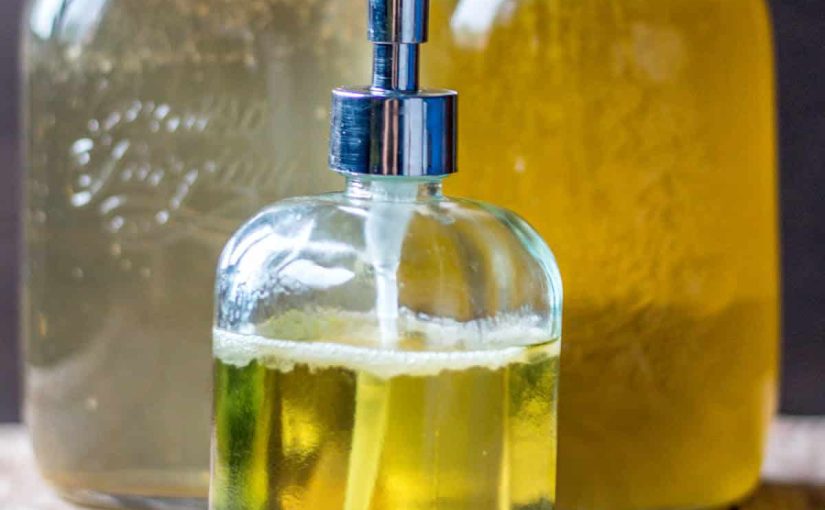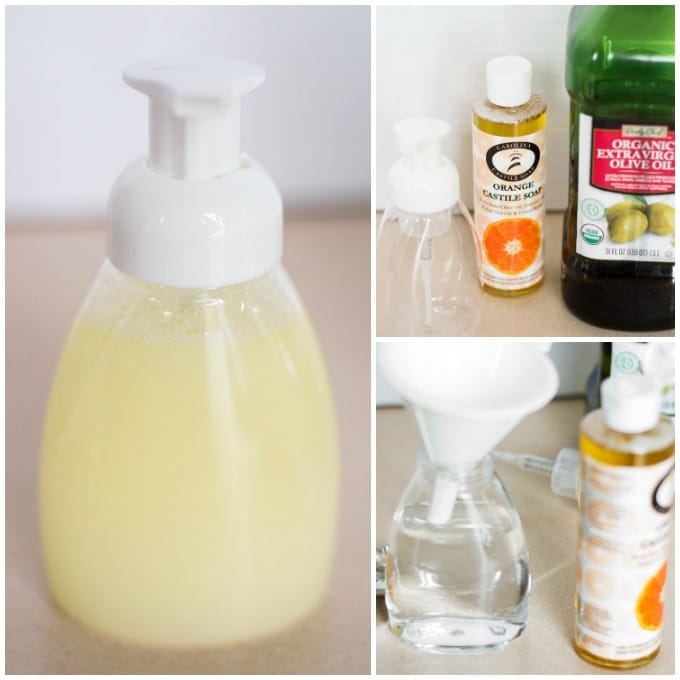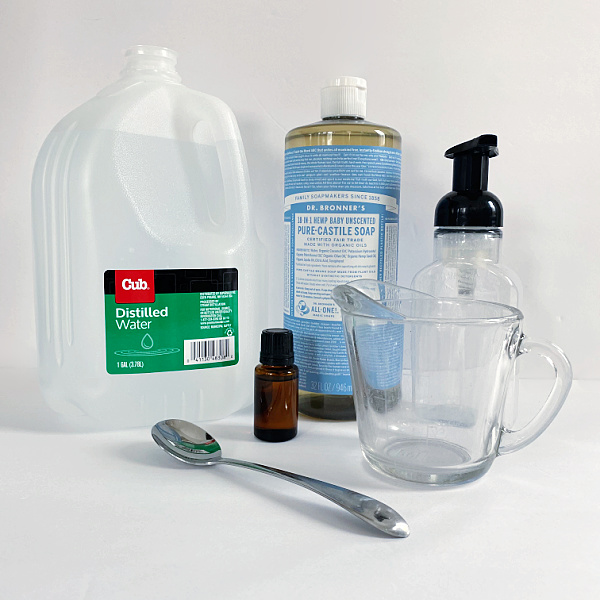Why Make Your Own Hand Soap
How to make hand soap? Creating your own hand soap has multiple advantages. Here’s why you might consider it:
Control over Ingredients
By making soap yourself, you know exactly what goes into it.
Personalization
Customize scent and texture to your liking.
Environmental Impact
Homemade soap reduces plastic waste from store-bought bottles.
Cost Savings
It’s often cheaper than buying pre-made soaps.
Avoid Harsh Chemicals
Commercial soaps may contain undesirable chemicals. DIY lets you avoid these.
Educational Activity
It’s a great way to learn about soap-making.
Fun Crafting Project
Making hand soap can be a fun and rewarding DIY project.
In essence, taking the DIY route allows for a healthier, more cost-effective, and environmentally friendly way to keep hands clean. Plus, you get the satisfaction of using a product you made yourself.
The Environmental Benefits
Turning bar soap scraps into liquid soap not only benefits your wallet but also the environment. The process helps reduce waste, encourages the repurposing of materials, and ultimately contributes to a more sustainable lifestyle. Let’s delve into the specific environmental advantages of making your own hand soap:
Minimizing Plastic Waste
Every time you opt for a DIY liquid soap, you’re cutting out the need for another plastic soap bottle. By using reusable dispensers, you avoid contributing to plastic pollution.
Reducing Carbon Footprint
DIY soap making means less need to buy commercially manufactured products. Fewer products transported means a smaller carbon footprint.
Encouraging Zero Waste Practice
Using every bit of the bar soap signifies a zero waste approach, where all parts of a product are utilized and nothing is discarded needlessly.
Less Water Waste
Commercial liquid soaps are mostly water. When you convert a bar to liquid soap at home, you use less water than what’s in the pre-made ones.
These environmental benefits illustrate that DIY liquid hand soap is not just good for your hands, but also for the planet. It’s a simple step toward living more sustainably.
Necessary Tools and Ingredients
Transforming bar soap into liquid soap is surprisingly straightforward and requires only a few basic tools and ingredients. Let’s break down what you’ll need to get started and ensure your DIY hand soap turns out perfectly:
Tools You’ll Need
- Grater: To finely shred your bar soap for easier melting.
- Large Pot: For boiling water and melting soap shavings.
- Funnel: Aids in transferring liquid soap into dispensers.
- Measuring Spoons: For adding precise amounts of glycerin or essential oils.
- Soap Dispenser: Choose reusable options to store your hand soap.
Essential Ingredients
- Bar Soap Scraps: Collect scraps or use a full bar if preferred.
- Distilled Water: To dilute the soap; tap water can also work if it’s soft.
- Natural Preservative: Such as leucidal liquid SF to extend shelf life.
- Glycerin: Optional, but adds moisture and a smooth texture to your soap.
- Essential Oils: Customize the scent of your hand soap (optional).
Gathering your materials is the first step to creating a hand soap that is both eco-friendly and effective. Keep in mind to adjust quantities based on the amount of liquid soap you plan to make. The keywords like ‘how to make hand soap’ encompass the simplicity and ease of the DIY process. And remember, exercising caution with hot water and handling ingredients is paramount for your safety during this crafting endeavor.
Step-by-Step Guide to Making Liquid Hand Soap
Transform bar soap into liquid hand soap with this simple guide. It’s easy, customizable, and eco-friendly. Follow these steps to create your own hand soap:
- Step 1: Collect Scraps. Gather leftover soap bars or use a new one.
- Step 2: Grate the Soap. Use a grater to shred the soap finely for quick melting.
- Step 3: Boil Water. In a large pot, bring water to a boil.
- Step 4: Dissolve Soap. Add grated soap to boiling water and stir until melted.
- Step 5: Add Glycerin. Mix in glycerin for a smoother texture. This step is optional.
- Step 6: Include Preservative. Stir in a natural preservative like leucidal liquid SF.
- Step 7: Cool and Stir. Let the mixture cool overnight and stir again to check consistency.
- Step 8: Adjust. Add more water if too thick or more glycerin for moisture.
- Step 9: Add Scent. Customize with essential oils if desired.
- Step 10: Bottle Up. Use a funnel to pour the soap into dispensers.
This DIY process is not only simple but also allows you to craft a hand soap that fits your personal preferences. Use essentials like distilled water, natural preservatives, and optional glycerin. Add your own touch with essential oils to enjoy a unique fragrance. Homemade liquid hand soap is an economical and environmentally responsible choice.
Adding Natural Moisturizers
Adding natural moisturizers to your homemade hand soap enhances the benefits. Here’s how to do it:
Choose the Right Moisturizers
Natural oils and glycerin are great for skin hydration. Consider oils like coconut, almond, or olive oil.
Incorporate Glycerin
Add glycerin to your mix for extra softness. It helps lock in moisture and prevents dry skin.
Proportion is Key
Use a small amount; too much oil can make soap too greasy. A teaspoon per cup of water works well.
Mix Well
Ensure you whisk the oils or glycerin thoroughly into the soap mixture. This prevents separation.
Adding these moisturizing elements is simple and effective. Your soap will clean and also care for your hands. With these tips, you’ll have a nourishing hand soap that leaves skin feeling soft and hydrated.
Customizing Your Hand Soap with Essential Oils
Adding essential oils to homemade hand soap is a simple way to create a customized scent that appeals to your personal preferences. Here’s how to enhance your soap with aromas:
Selecting Essential Oils
Choose your favorite essential oils for your hand soap. Popular choices include lavender for relaxation, citrus oils like lemon or orange for an uplifting effect, and peppermint for a refreshing feel. Mixing different oils can create unique blends tailored just for you.
How Much to Use
Generally, a few drops of essential oil will suffice. Aim for about 10-15 drops per cup of hand soap mixture. This ratio ensures a noticeable scent without overpowering the senses.
Stirring in Oils
Once your base soap is ready, add your selected essential oils. Mix them in well to ensure the fragrance is distributed evenly throughout the soap.
Testing the Scent
After mixing, test the scent. If it’s too weak, you can always add more oil carefully. Remember scents can strengthen over time.
Benefits of Essential Oils
Essential oils don’t just smell great; they can also offer benefits such as antibacterial properties or added relaxation.
By incorporating essential oils, you make hand washing a more enjoyable and personal experience. With the right essential oils, your DIY hand soap can be a simple luxury in your daily routine.
Tips for Making Foaming Hand Soap
Creating foamy hand soap at home is quite simple. Follow these easy tips for a satisfying pump of foam:
Use the Right Dispenser
To get foam, a special foaming soap dispenser is essential. These dispense less soap and add air to create foam.
The Perfect Ratio
Mix water and liquid soap in the correct ratio. Generally, one part soap to four parts water works well.
Warm Water Works Best
Use warm water to mix the soap better. It also helps to dissolve the soap evenly.
Add Essential Oils
For scent and extra benefits, add a few drops of essential oils to your mixture.
Shake Gently
Once combined, gently shake the soap dispenser to mix the contents. Don’t shake too hard to avoid excessive suds.
Test and Adjust
If the foam is too runny or sparse, adjust your soap to water ratio. Add more soap for a denser foam.
These tips should help you create a DIY foaming hand soap that’s perfect for your needs. Happy crafting!
Storing and Preserving Homemade Hand Soap
After you’ve made your own liquid hand soap, storing it correctly is important.
Choosing the Right Containers
Opt for clean, airtight bottles or jars. You want to prevent contamination and leakage. Reusable glass is good, but any clean container works.
Using Natural Preservatives
To lengthen your soap’s life, add a natural preservative. Options like leucidal liquid SF work well.
Cool and Dark Storage
Store your bottles in cool, dark places. Heat and light can spoil the soap faster.
Label Your Soap
Write the date and ingredients on your containers. This helps you remember when you made it and what’s inside.
Avoiding Water Contamination
Make sure hands are clean before reaching into the soap. Dirty hands can introduce bacteria.
Keeping Extra Soap Chilled
If you’ve made a lot, keep excess soap in the fridge. This keeps it fresh longer.
Shelf Life Expectancy
Homemade soap can last a few months. Preservatives help, but keep an eye out for changes in smell or texture.
Take care to store and preserve your homemade hand soap properly. With the right methods, you can enjoy your soap for longer.
Cost-Effectiveness of DIY Hand Soap
Making your own hand soap from bar scraps is wallet-friendly. Here’s why:
Save Money on Purchases
DIY soap costs less than store-bought. You use simple ingredients and avoid paying for brand names.
Use Less Soap Over Time
Homemade liquid soap can be less wasteful. You control how much soap goes into each batch.
Recycle What You Already Have
Using leftover bar scraps means no need to buy new soap. It’s a great way to recycle.
Bulk Buying Equals More Savings
Buying bar soap in bulk for DIY liquid soap saves even more. Bulk items usually cost less.
Avoid Extra Features That Increase Cost
Commercial soaps often have additives. These can raise the price. Your DIY soap is pure.
Making your hand soap is a smart move. You can save a lot while still enjoying quality soap. Try it and see the difference in your expenses.
FAQs About Homemade Hand Soap
Engaging in the creation of your own hand soap prompts various questions. Let’s explore some frequently asked questions to clarify common curiosities about homemade hand soap:
Is Homemade Soap As Effective As Store-Bought?
Yes, homemade hand soap cleanses just as store-bought versions do. The key is proper dilution and mixture.
Can I Use Any Soap Bar?
Absolutely. Use any soap bar you prefer. The final quality depends on the bar’s ingredients.
Does Homemade Soap Have a Shelf Life?
Typically, it lasts a few months. Adding a natural preservative can extend its longevity.
Will My Homemade Soap Kill Germs?
Sure. Soap’s cleansing action helps remove germs, especially when used with warm water.
Is It More Economical To Make Hand Soap?
Generally, yes. It utilizes minimal ingredients, often leading to cost savings over time.
Can I Add My Own Scent?
Of course! Customize scents with your favorite essential oils.
Does It Save Plastic?
Yes, using refillable dispensers minimizes plastic waste significantly.
Can It Dry Out My Skin?
Homemade soap can be more moisturizing, particularly with added glycerin or natural oils.
With these answers, you’ll be well on your way to mastering homemade hand soap creation.



